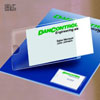Shopping Cart [more]
Index of Products
Information
- 9PTK Titration Instructional Videos
- Automatic Rinse Tank Controls
- Boiler and Cooling Towers
- Circuit Board Cleanliness Testing
- Deionized Water
- Environmental Applications
- Fountain Solutions
- Frequently Asked Questions
- Glossary of Terms
- Hemodialysis Applications
- Horticulture
- Hydroponics
- Material Safety Data Sheets
- Operation Manuals / Instructions
- Oxidation Reduction Potential (ORP)/Redox
- Pool and Spa
- Product Data Sheets
- Reverse Osmosis
- Technical Reference: Handheld pH Instruments
- Textile Manufacturing
Hydroponics
WHAT IS HYDROPONICS?
"A technique of growing plants in nutrient solution”. Hydroponics literally means water-working or water- activation. It is a cultivation technique for growing plants in highly oxygenated, nutrient enriched water, rather than soil.
The nutrient solution and its management are the cornerstone for a successful hydroponics system. The function of a hydroponics nutrient solution is to supply the plant roots with water, oxygen and essential mineral elements in soluble form.
In soil, biological decomposition breaks down organic matter into basic nutrients that plants feed on. Water dissolves these nutrients which allows uptake by the roots. For a plant to receive a well balanced diet, everything in the soil must be in perfect balance.
Depending on the product, there are approximately seventeen (17) required elements for proper growth. For growth of higher plants, nine of these elements (macro nutrients) carbons, hydrogen, oxygen, sulfur, phosphorus, calcium, magnesium, potassium, and nitrogen are required in relatively large amounts. The remaining eight elements (micro-nutrients or trace elements) iron, zinc, copper, manganese, boron, chlorine, cobalt, and molybdenum are needed in only minute amounts.
To support a plant in a system, an insert medium like fiber or leca, may be used to anchor the roots. These mediums are designed to be very porous for excellent retention of air and water for healthy plants- roots to breathe! With the proper light exposure, nutrients, pH and EC/TDS measurements, plants will grow many times faster, bigger and healthier.
WHAT IS pH? WHY IS IT IMPORTANT?
pH, means "potential hydrogen" ion concentration (commonly referred to as acidity or alkalinity) in a particular medium, such as water, soil, etc. All elements have a specific solubility pH range. This means that mineral elements can become more available for plant uptake within certain pH ranges. The scale of pH is 0 to 14, 14 is the highest for alkalinity, 7 is neutral, and 0 is the highest acidity. It is well documented that growing media pH is critical to successful plant growth. This is especially true for soilless mixes and hydroponics.
Extreme pH conditions such as very low pH (below pH 4.5) and very high pH (above pH 9) can cause damage to plant roots and limit or kill production.
WHAT IS ELECTRICAL CONDUCTIVITY (EC) OR TOTAL DISSOLVED SOLIDS (TDS)? WHY IS IT IMPORTANT?
EC [displayed in either microsiemens (μS) or micromhos (μM)] is the measurement of the nutrient solutions ability to conduct an electrical current. In hydroponics the conductivity (EC) is most commonly expressed in an equivalent Total Dissolved Solids (TDS) value. The unit of measurement for TDS is parts per million (ppm). Pure water (deionized water) is actually an insulator — it does not conduct electricity. It is the conductive substances (or ionized salts) dissolved in the water that determine how conductive the solution is. With few exceptions, when there is a greater concentration of nutrients, the electrical current will flow faster, and when there is a lower concentration, the current will flow slower.
This is because the quantity of dissolved solids in the nutrient solution is directly proportional to the conductivity. Thus, by measuring the EC, one can determine how strong or weak the concentration of the nutrient solution is.
HOW IS EC CONVERTED TO PPM OF TDS?
Myron L® Company instrumentation uses a complex equation that exactly matches the true TDS of the solution being tested. While other instrument manufacturers use a “fixed” factor (easier and less costly to manufacture) to “estimate” the TDS from electrical conductivity. As you can see in the following examples a fixed factor of, for example .5 is far off the mark.

TEMPERATURE COMPENSATION (TC), WHY IS IT IMPORTANT?
Without Temperature Compensation (TC), instrumentation measuring waters/nutrients would be indicating different values at differing temperatures. TC standardizes the readings at the international standard of 25°C / 77°F. With proper TC all readings will be repeatable at differing temperatures and may be correlated. All Myron L® instruments use advanced TC circuitry and equations to give you the best TC correction available.
CALIBRATION STANDARD SOLUTIONS
Clearly the “BEST” choice when calibrating instrumentation for controlling water and nutrients in Hydroponics, Greenhouses and Agricultural applications is the "442™"" natural water standard.
This standard developed over 40 years ago by the Myron L® Company closely matches the composition of natural water. The "442" refers to the combination of salts with deionized water to make the standard: 40% sodium sulfate, 40% sodium bicarbonate, and 20% sodium chloride. Since its development, it has become the world’s most accepted natural water standard. All HYDROPONICS Instruments from the Myron L® Company are calibrated using this standard.
For truly accurate and repeatable readings for your Hydroponic applications, use Myron L® Company instrumentation and "442" Standard Solutions.
All instrumentation, pH buffers and EC/TDS standards are available from the Myron L® Company and our worldwide distribution network.

Other products and companies referred to herein are trademarks or registered trademarks of their respective companies.
**Prices, images and specifications subject to change without notice.**


For your convenience, we accept these credit cards:











